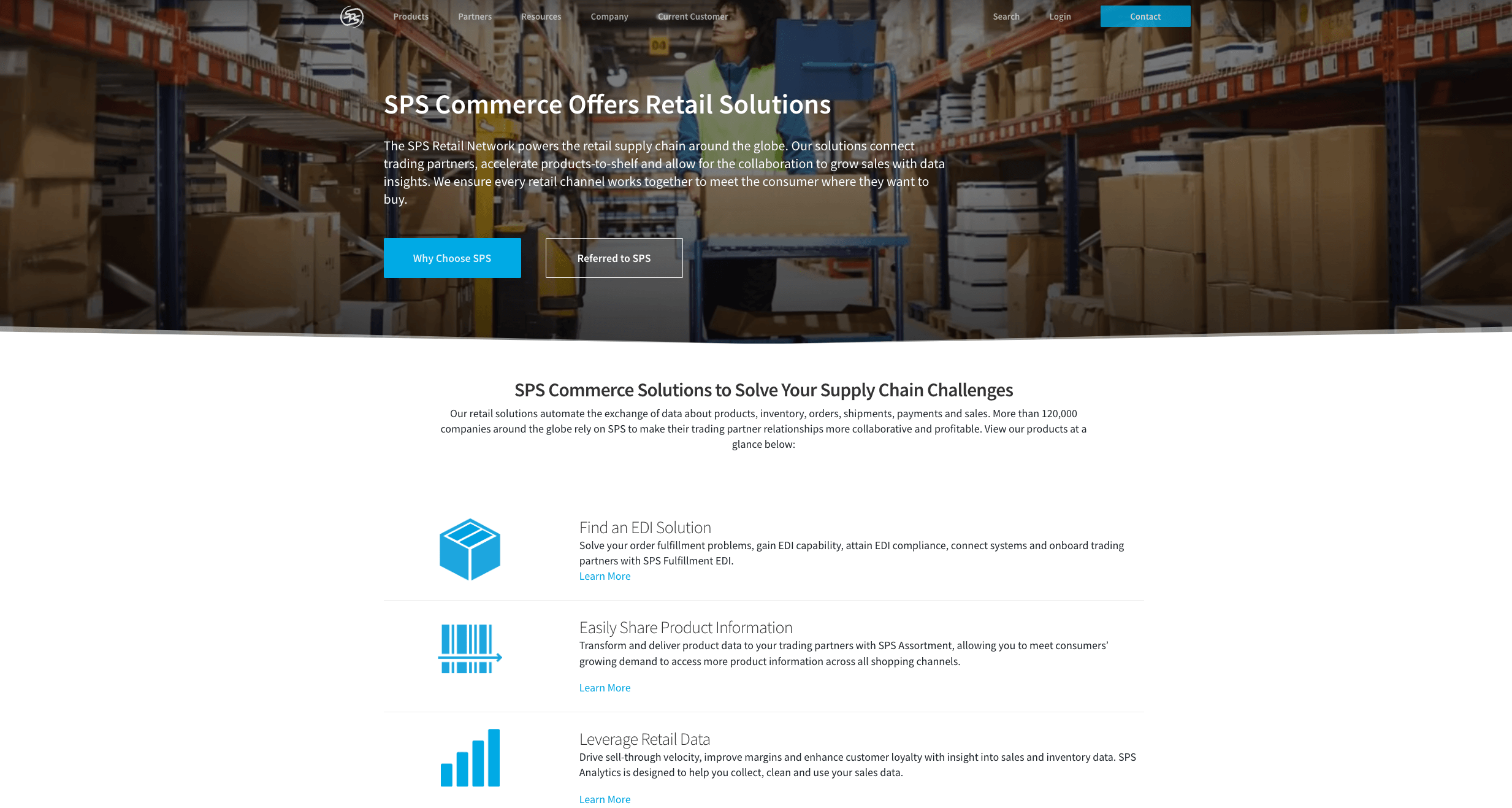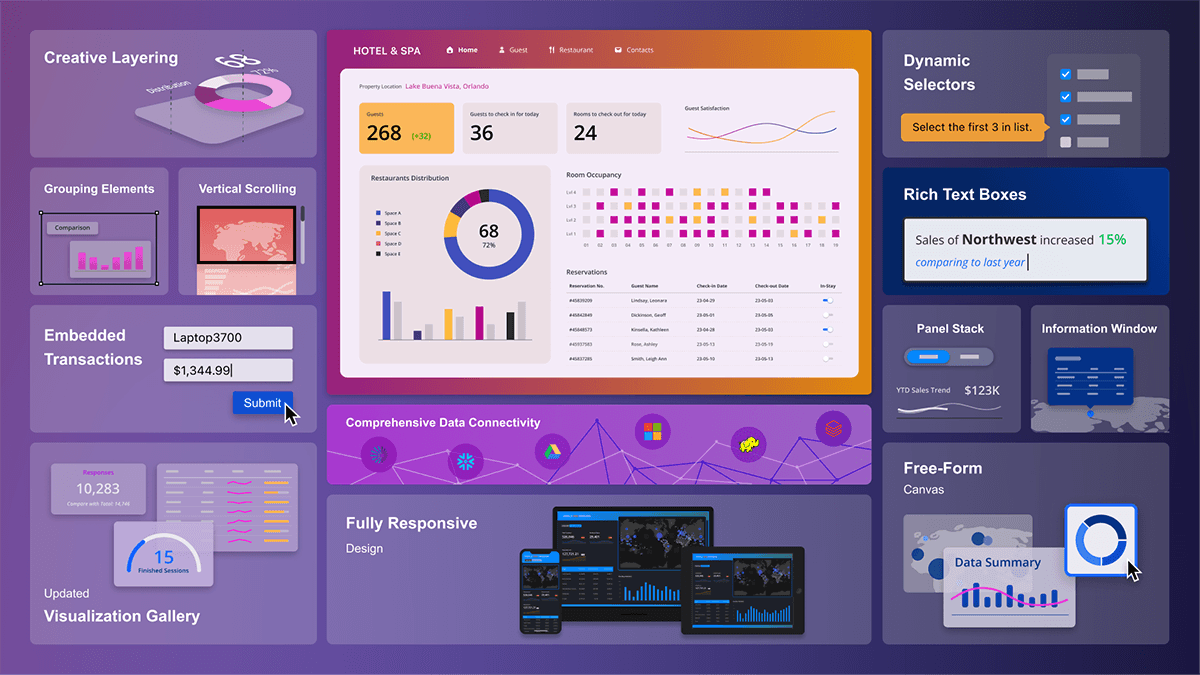Transforming Analytics Management: How SPS Commerce Enhanced Efficiency with Strategy’s REST APIs
Discover how SPS Commerce transitioned to a robust architecture with Strategy’s REST APIs to improve reliability, ease of development, and operational efficiency.
SPS Commerce helps over 120,000 retail supply chain partners connect, collaborate, and drive revenue with comprehensive cloud-based solutions.
The tech giant offers a range of retail management solutions for sales, marketing, supply chain, operations, and more.


The Challenge
SPS Commerce used SDKs (Software development kits) to leverage the customization and integration capabilities that these development tools provided at the time.
Originally, SPS Commerce’s developers could only utilize Java plugins to create “subscriptions” (Analytics reports) and synchronize its user database.
Each time a subscription was created, multiple “objects” (such as events and schedules) had to be created. Each object added entries to the metadata repository, and in the case of multi-retailer subscriptions, required the developers to create separate databases.
The additional logging for multi-retailer subscriptions meant that the system had to create and manage intermediary objects to track the relationships and data flows between different entities (suppliers, retailers, events, schedules).
As more subscriptions were created, the metadata repository became increasingly bloated, leading to performance degradation and increased complexity in system management.
Unlock AI-powered efficiency in your retail business.
Limitations of SPS Commerce’s SDK
Metadata Bloat
The process of creating numerous data fields resulted in bloated metadata.
This made the system cumbersome and difficult to manage, affecting overall efficiency.
Difficulty in Debugging
Debugging the SDK-based coding was extremely difficult.
Developers had to log onto the web server, hook up the debugger with additional tools, and go through numerous steps to debug the code.
No Support for Custom Code
Custom SDK coding was not supported.
The SDK-based approach was bound only to Java, restricting the use of other coding languages.
Ineffective & Resource intensive
The execution process through the SDK was inefficient and slow.
Moreover, the time-consuming process added unnecessary overheads to the web server and increased costs.
The Solution
As technology developed and new capabilities were introduced, SPS Commerce requested a modern, efficient, and easier-to-use approach for integration and customization.
Enter Strategy’s REST API.
Strategy’s REST API works like a waiter in a restaurant: The user informs the waiter (API) what they want (order, or request), and the waiter goes to the kitchen (the server) to get it for the user.
The transition from the SDK to the Strategy REST API involved a systematic approach to re-architecting SPS Commerce’s systems to leverage the new capabilities.

The Process
Step
1
A centralized database was designed to store and manage all necessary information related to subscriptions and user synchronization.
Step
2
Strategy’s REST APIs provided an extensive set of endpoints for managing subscriptions, users, events, schedules, and more.
Step
3
Using Strategy’s detailed workflows and documentation, SPS Commerce mapped out the sequence of API calls needed for their operations in the right order.
Step
4
The new REST API offered immediate feedback, allowing the system to log success or failure information in real-time.
Step
5
New services were created to interact with the REST APIs. They used modern programming and languages best suited for integration.
Step
6
Centralized logging mechanisms were created to record all API interactions and their outcomes, making it easier to pinpoint where an issue occurred.

The Impact
- The new architecture using REST APIs has simplified SPS Commerce’s operations significantly.
- They can now manage thousands of subscriptions and numerous user syncs effortlessly, with fewer issues and faster response times.
- Leveraging the comprehensive support provided by Strategy, SPS Commerce have built a robust, efficient, and scalable system.
- The shift to the new architecture has also fostered better skill development among team members, making the development process more intuitive and enjoyable.
- This transition has notably reduced the frequency of support tickets related to subscriptions and user syncs, marking a substantial upgrade in their operational efficiency and user satisfaction.
SPS Commerce Leverages REST APIs Benefits
Reduced Metadata Bloat
Immediate Feedback
Consistent and Reliable Execution
Language Independence
Reduced Failures
Ease of Debugging
Simplified Development
Reduced Operational Costs
Keynote Speech
Watch Staff Software Engineer Shawn Royal discuss how Strategy’s REST API empowered SPS Commerce to:
- Significantly reduce support tickets
- Improve reliability with real-time tracking
- Enhance the development and debugging experience
- Automate the infrastructure management process

Trusted by some of the world's most well-known and demanding organizations




